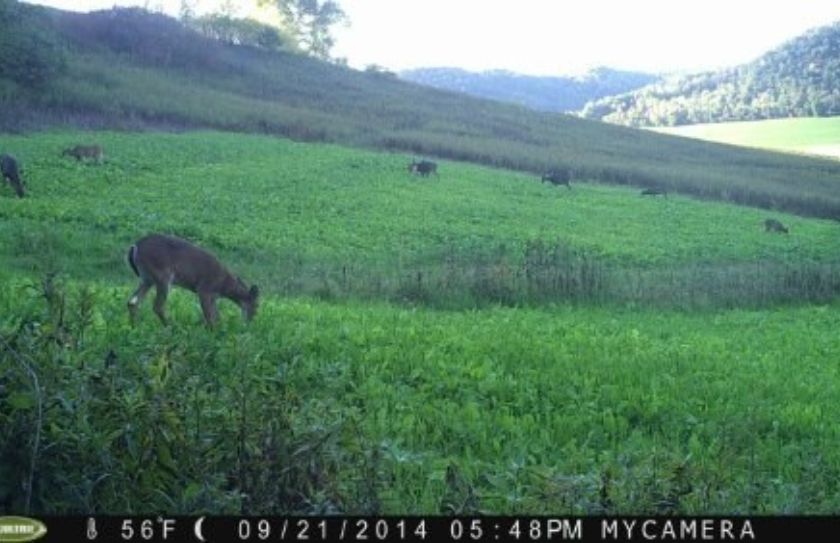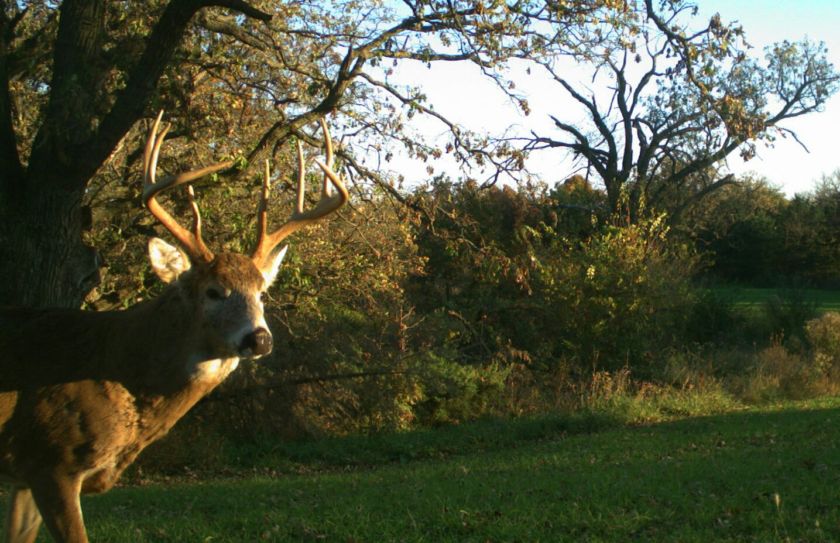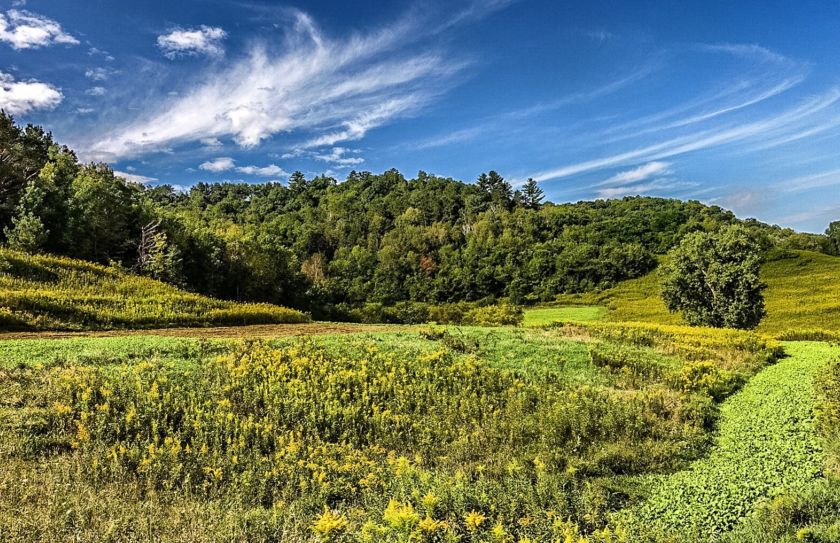Every private parcel has a necessary base amount of food plot acreage that should be the foundation of their entire planting strategy. The amount of forage needed on your land, is the total volume of food that you need, to attract the attention of the local deer herd during the entire hunting season. If you don't hit your base amount of food for the season, you can expect your ability to grow and hunt a quality herd to be greatly diminished!
Attracting the local herd the entire season may seem rather obvious, but often I find that the focus of many food plot programs is more of a shotgun approach that includes a variety of random goals. Hunting plots, Summer plots and an overwhelming number of food plot choices, often leave the landowner with a confusing blur of need and want. However, if you figure out your base food plot acreage first, before ever planting your first seed, then I have experienced that every other planting goal slots into its appropriate level of priority. Attacking your base first, is the often overlooked but most important initial food plot strategy, that you need to consider for your land.
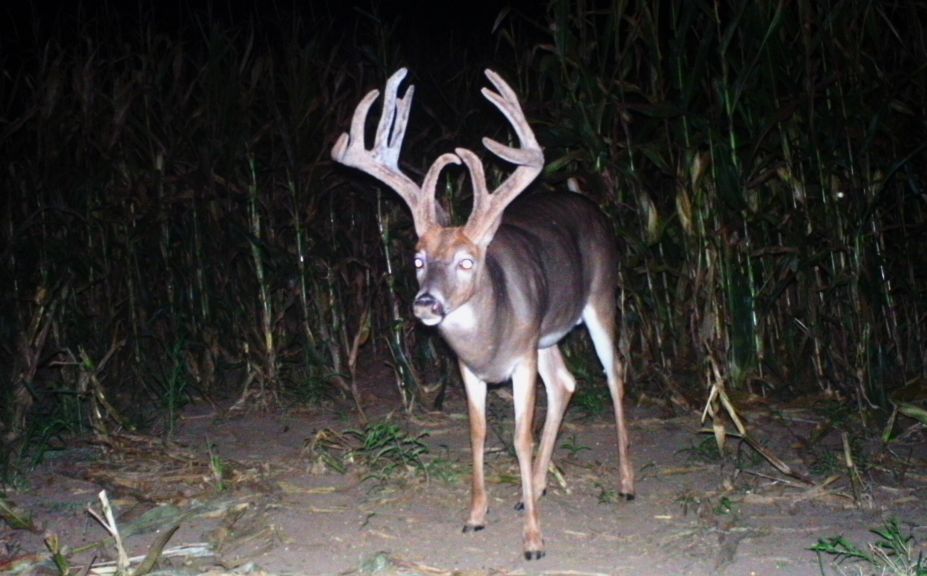
Hunting Season Food Plot Base Matters Most
You can make a case that each season matters when it comes to the growth and nourishment of whitetails however, no amount of health can overcome a deer herd that is attracted away from your land, during the hunting season. Even if all you want to do is hunt big bucks, let alone build a quality herd, you can't afford for your acres of habitat to be filled with low value random deer movements during the Fall. Food plots support cover and cover supports food. Which one is more important? Neither, they are equal, so learning to place a priority on your base amount of food plot acres is often the missing habitat ingredient that will help you experience your whitetail dreams.
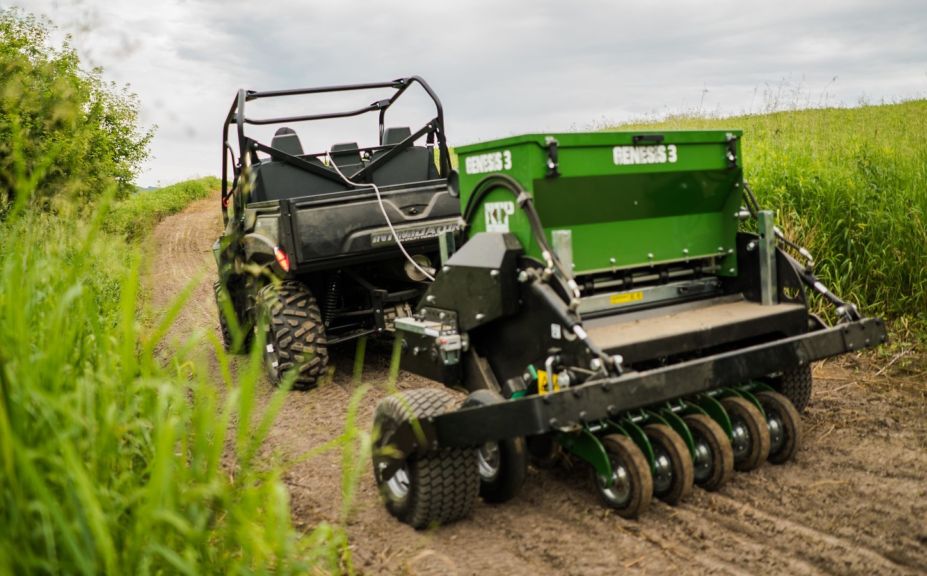
*By using a no till Genesis Food Plot Planter, we can make sure to keep from exposing weed seeds, which is typical with conventional discing or tilling food practices. This allows us to keep our overall plot acreage to a minimum on small tracts of land, while maintaining the remainder in holding cover.
Protect Your Food Plot Base At All Costs
The land used in the video features less than 3 acres of food plots on roughly 40 acres of total land. While this may or may not be the amount of acres needed for your land, consider it a great balance between more food-needy northern wilderness regions, and heavy food supported high % ag locations. We have found that about 2.75 acres of food supplies enough forage to cover the entire hunting season, with a little leftover for nearly the entire month of January. However, we can't afford to lose any of those acres to being lazy or thru a poor planting strategy. There are 3 base-robbing food plot factors that you should consider when, trying to maximize your available space to plant food plots:
1. Soil Fertility
Your goal should be to create the highest volume of food plot plantings that you can produce, on the soil types that are available for you to plant on. Addressing ph concerns is the most important first step and after you have corrected the ph, make sure that you follow the recommendations of a soil test to get your food plot forages the food that they need to thrive. A great base food plot strategy is totally incomplete without making sure that the acres of soil that you are planting into, are as fertile as can be.
2. Weed Control
What's a 10 acre food plot that is filled with 50% weeds? 5 acres of food plots and 5 acres of wasted potential cover. I can't stress enough how much weeds play a roll in destroying your opportunity to find your necessary food plot acreage base.
3. Summer Food
Having a Summer food source is likely the most over-rated aspect of food plotting. In the North 1/2 of the country deer have several times more food than they actually need during the Summer, and a warm season plot can create a major, unwelcome factor that you need to consider: Excessive deer numbers! Excessive deer numbers are not only hard to control, but they can quickly cut into your necessary base amount of food plot acreage. As a general rule, if you need to increase your deer numbers - plant Summer food plots. However, if you need to decrease the deer numbers, diminish or completely eliminate your Summer plantings. Even in the best of scenerios, creating a Summer herd can literally destroy your necessary Fall base, before it even matures.
Summer food sources and great Fall cover, attract Summer fawning acres. Summer fawning cover attracts does, fawns, doe family groups and leads to generations of a female army of deer that likely stick around the entire hunting season. When your Fall plantings are beginning to germinate during August and September, you can expect any resident deer to hammer them quickly when they emerge. My goal is to allow the Summer deer herd to dine on the neighbor's ag land and food plots, and then move to my 100% fall offerings during late September and early October. This allows my base amount of food plot acreage to experience nearly 65-75% of it's potential volume, before 90% of the deer even arrive.
*In order for you to experience a late season hunt, you have to still have some late season food hanging around. Making sure that we hit our base amount of food plot acreage created some great November and December memories for us, in 2016!
Conclusion
Have you hit your base yet? If your goal is to create a quality herd, a quality hunt or both, your base isn't just a number on a piece of paper, it is a planting and food plot necessity. Afterall, you can't hold, protect, build, shape or hunt, what you can't attract. Try finding your base amount of forage this season, and enjoy the strategic rewards of the proper balance between food and cover.
